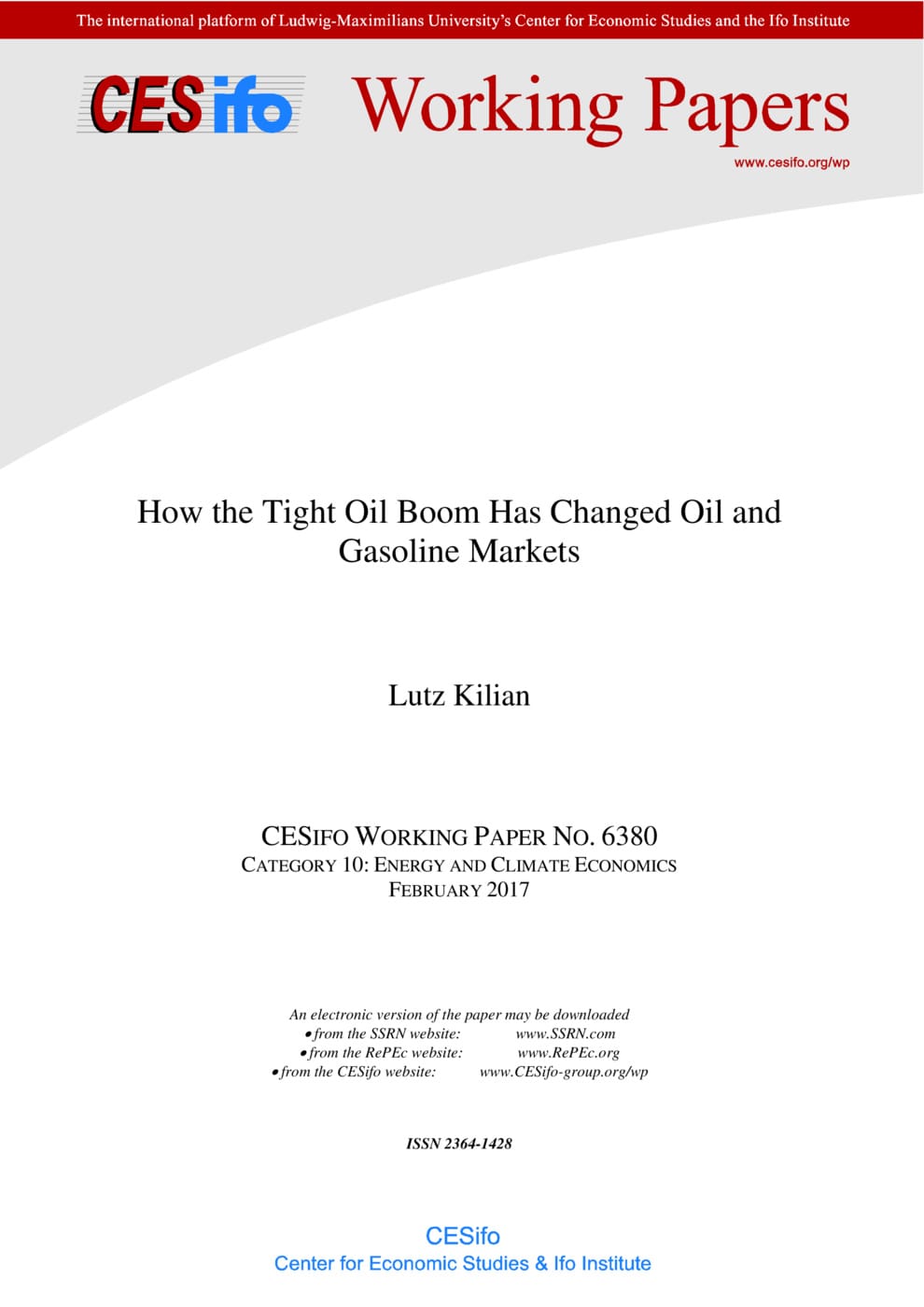How the Tight Oil Boom Has Changed Oil and Gasoline Markets
CESifo, Munich, 2017
CESifo Working Paper No. 6380

Starting in late 2008, the U.S. production of tight oil surged, causing a renaissance in the U.S. oil sector that few industry analysts had anticipated. This tight oil boom reduced the dependence of the United States on petroleum imports and allowed it to become a major exporter of gasoline and diesel fuel. Since mid-2014 the global real price of crude oil has experienced a large and sustained decline. This review article addresses several questions of general interest. First, to what extent was the recent oil price decline caused by the tight oil boom? Second, how did the tight oil boom affect the price of gasoline in global markets and in the United States? Third, what determines the investment response of the oil sector to oil price fluctuations? Fourth, how has the tight oil boom affected the transmission of oil price shocks to the U.S. economy? Finally, what are the implications of the U.S. tight oil boom for European oil importing economies?
Energy and Climate Economics
Resources and Environment